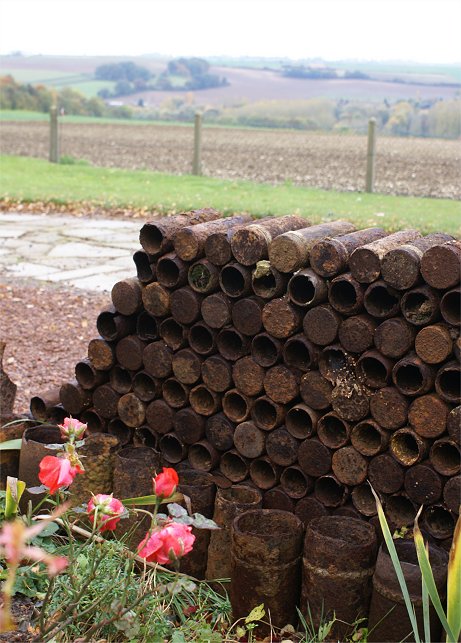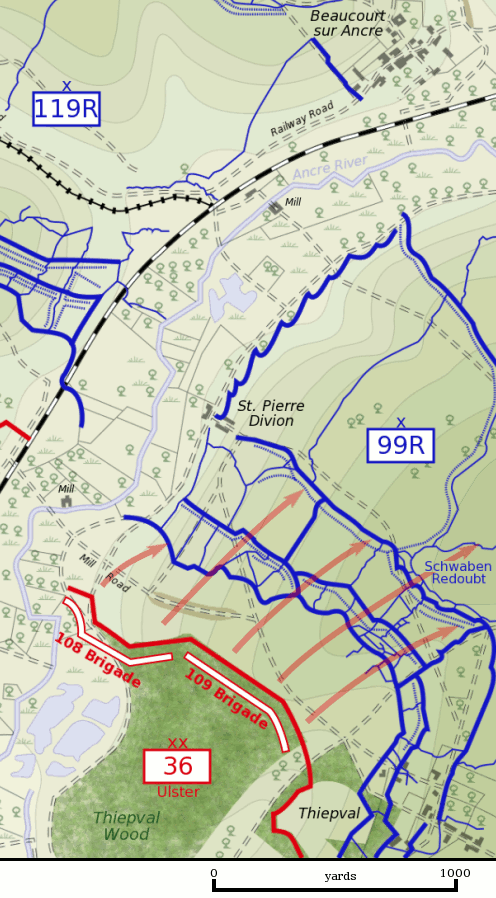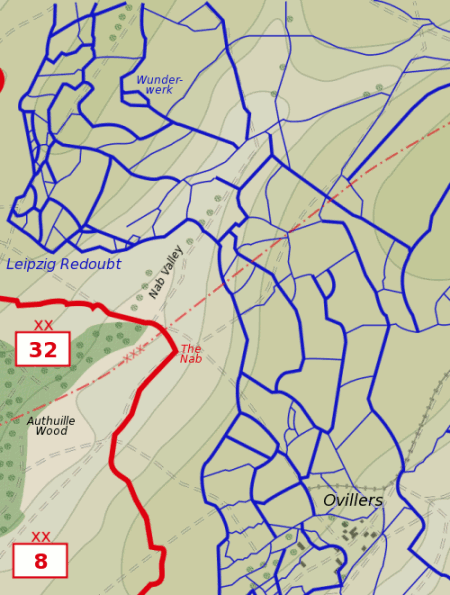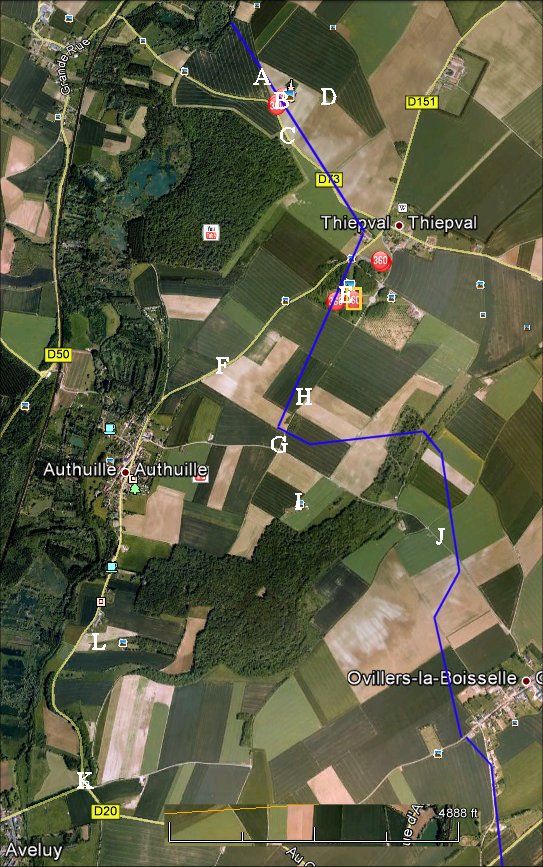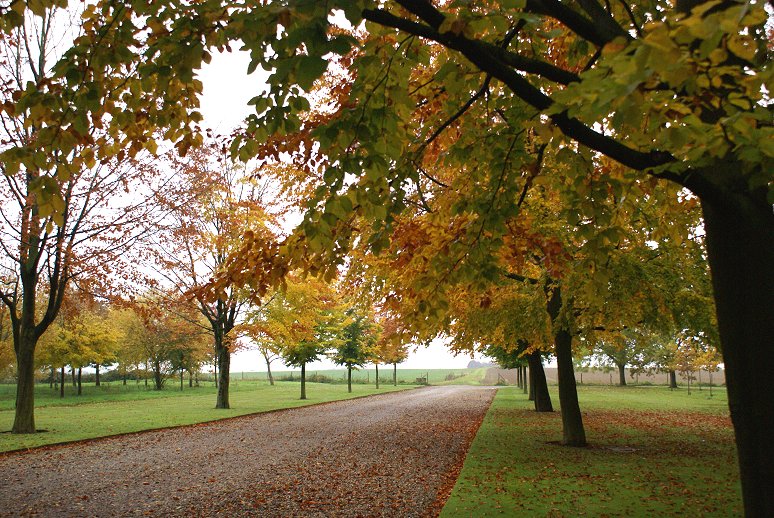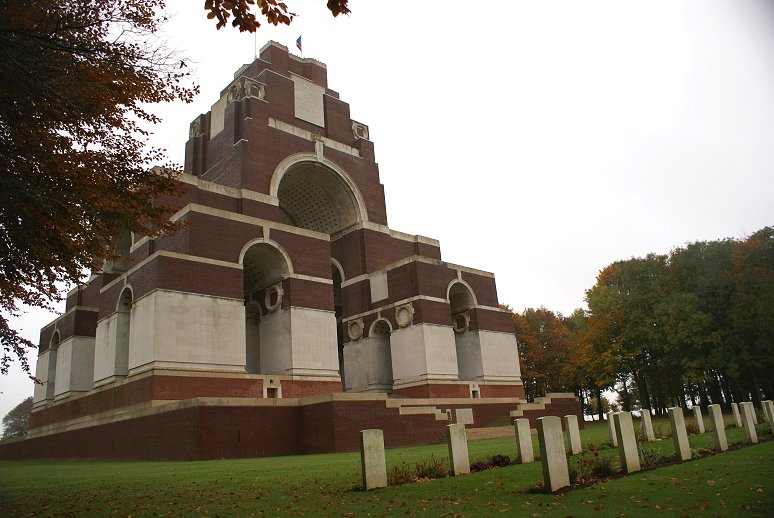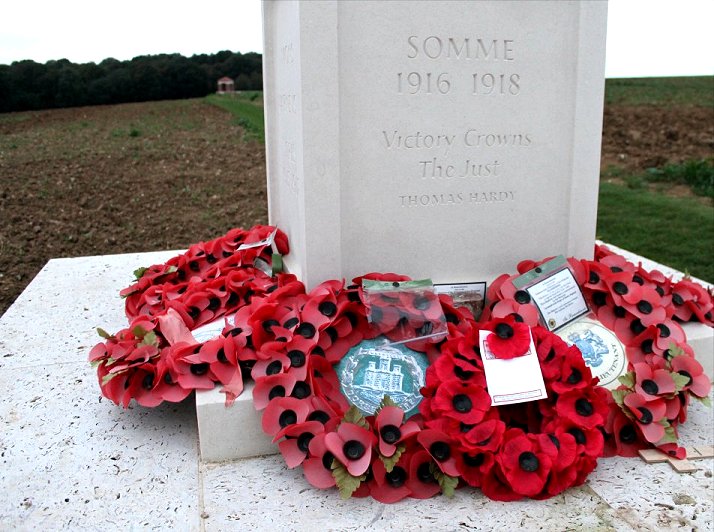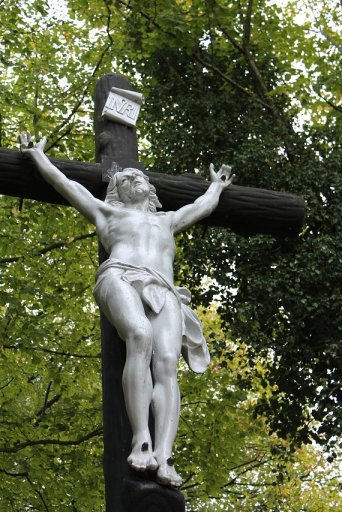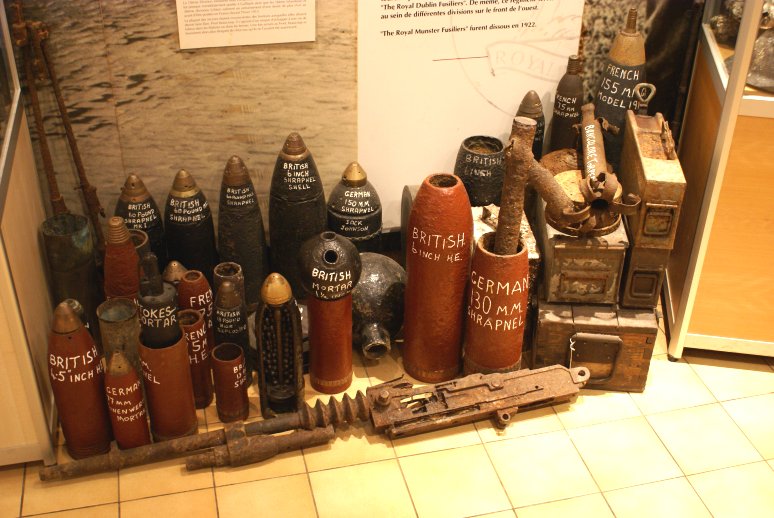
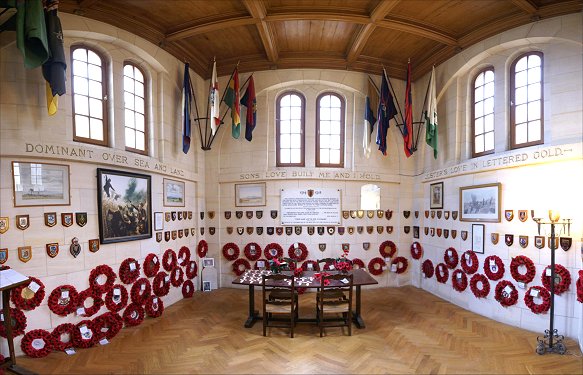
Patterned on a tower near Belfast, Northern Ireland, an area familiar to some of the men of the 36th as they had trained there in 1914. Ulster Tower sits along what was the German front line on July 1st attacked by the 108th Brigade. The is a small museum and collection of battlefield relics. Climbing to the top of the tower, however, is not possible.
